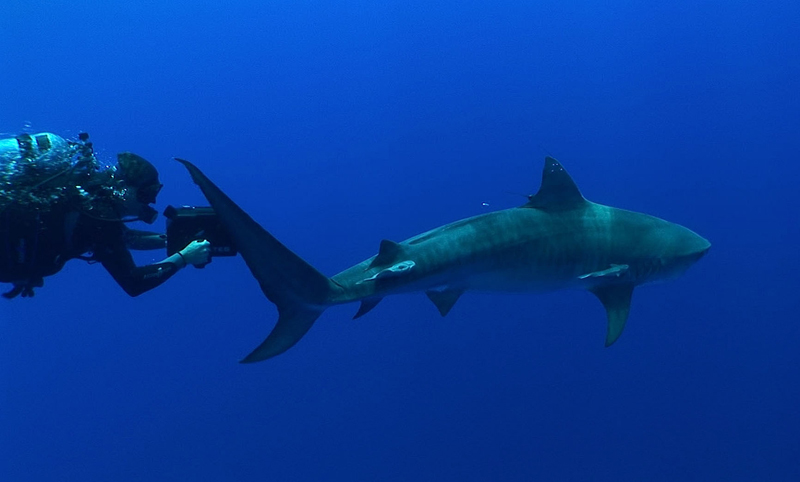Recent News
Video: Shark Makes ‘Visit’ To Shelly Bay BeachMonday, June 04, 2018
Yet another video of a shark has gone viral, this time with footage appearing to show the shark coming in close to shore at Shelly Bay Beach.
Say no to Plastics
Friday, June 01, 2018
Today, June 8th, is World Oceans Day, and the theme for this year is the prevention of plastic pollution to encourage healthy oceans. On World Oceans Day, people around our blue planet celebrate and honour the ocean, which connects us all.
Kids donate birthday money to BZS
Friday, June 01, 2018
Instead of spending their birthday money on video games or the latest dolls, on Monday 14th May 11-year-old Oliver "Olly" Cherry and 8-year-old twins Hayleigh and April Cherry presented Dr. Ian Walker, curator of the Bermuda Aquarium, Museum and Zoo, with a donation of their birthday money to be put towards the Bermuda Zoological Society's education programmes.
Choy goes to “Raw” at the Florida Aquarium
Friday, June 01, 2018
Last month BAMZ Aquarist, Choy Aming, was able to attend the Regional Aquatics Workshop - RAW - at the Florida Aquarium in Tampa, thanks to the funding from the Bermuda Zoological Society. The workshop took place from 14th-18th May, and according to Choy it was an intensive 5 days.
MSA students raise money for the BZS Amphibian Project
Friday, June 01, 2018
On Wednesday, 28th March the students of the two Mount Saint Agnes' grade 3 classes held their "TOAD-ally Terrific tag sale", a fundraising event for the Amphibian Project which is supported by the Bermuda Zoological Society (BZS). After the two-day event, the students were able to raise over $1,300 for the Amphibian Project.
About
GovernanceAbout Us
Newsletter
Latest News
Gift & Bookstore
Contact
General Inquiries
info@bzs.bm
Latest News
All the latest updates and news from the Bermuda Aquarium, Museum, and Zoo, one of Bermuda's leading visitor attractions!
Andy — a tiger shark tagged in Bermuda by scientists from Nova Southeastern University’s [NSU] Guy Harvey Research Institute [GHRI] in 2014 — is now the longest tracked tiger shark on record.
“Travelling approximately 37,565 miles off the eastern coast of the United States and around Bermuda, the Bahamas and Turks and Caicos, Andy is now the longest tracked tiger shark on record and shows no sign of slowing down. He’s been going for more than 1,240 days,” GHRI said.

“We are delighted with how long Andy has reported data, which has tremendous value for us as researchers,” said Mahmood Shivji, Ph.D., the director of NSU’s GHRI and a professor in the university’s Halmos College of Natural Sciences and Oceanography. “This amazing, nearly three and a half year track is revealing clear repeated patterns in the shark’s migrations between summer and winter.”
More than 150 sharks, including tigers, makos and oceanic whitetips, have been tagged by the GHRI in the last decade. The data collected is used to study the migration patterns of these incredible creatures. Andy and many other GHRI tagged sharks can be followed online in near real-time at www.GHRItracking.org.
“Tracking the migration patterns of sharks, like Andy, for extended periods of time allow us to better understand their behavior and habitat utilization, resulting in better knowledge on how to manage the species,” said Guy Harvey Ocean Foundation [GHOF] Chairman Guy Harvey, Ph.D.
According to a paper published in the most recent ICES Journal of Marine Science by Shivji and his colleagues, tiger shark migrations are heavily influenced by a shark’s physical characteristics [i.e. size, age] and environmental variations [i.e. water temperature, prey availability].
“This study, funded by the Guy Harvey Ocean Foundation, NSU’s GHRI, the Shark Foundation [Hai Stiftung] and the Bermuda Shark Project, reveals not only the environmental factors driving these massive migrations by tiger sharks but also highlights how the different age groups behave,” the Institute said. “This information could prompt fisheries managers to reevaluate how best to protect this near-threatened species.


